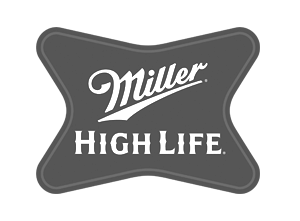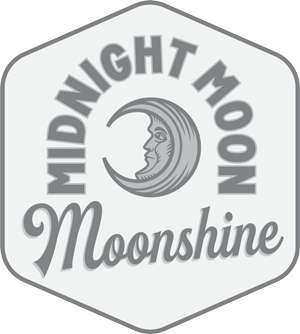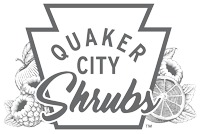By Anna Perling Updated February 10, 2022
An increasing array of exciting non-alcoholic beverage options—balanced, complex drinks that you can sip and savor—are here to replace the Shirley Temple. We’ve tasted 39 different drinks since 2021—including 15 new bottles in 2022—to find the most unique, mature, and delicious ones. Below are our 10 favorites (and the list of everything else we’ve tried), with detailed tasting notes to help you choose based on what you like and the experience you’re seeking. Whatever your preferences, these drinks are easy to serve and stunning to look at.
Hundreds of beverages, from imitation spirits to near-beers to simple seltzers, fall under the non-alcoholic umbrella. We narrowed the scope of testing for this piece. And we added a few resources on where to look for NA drinks, if you’d like to know what else is out there. If we missed one of your favorites, add suggestions to the comments section below.An important note: Many of these drinks contain herbal extracts and come with health warnings for people who are pregnant, who are taking certain medications, or who have other medical concerns. Before you consume any of them, we recommend checking a brand’s FAQ and talking with your doctor if you have questions. We’ve added health advisories to drinks that contain a trace amount of alcohol less than 0.5% ABV. That’s about as much alcohol as is in kombucha. It’s very little, but it’s still a residual amount if you are in recovery or can’t consume alcohol for medical reasons.
What makes a good non-alcoholic drink?
A great non-alcoholic (NA) drink has all of the elements of a great alcoholic one. Taste is deeply personal, but there are key components that make a drink feel balanced, namely a harmonious blend of acidity, sweetness, bitterness, salinity, and water. These layers of flavor play off of one another, blossoming as you sip or eat or lounge. The drink excites your palate and challenges you to figure out what exactly makes it so dang delicious—and why you can’t stop drinking it.
The trick is to create that nuance without using alcohol as a base. Alcohol has a signature burn—difficult to replicate—that helps slow down the drinker. Bitter, sour, or spicy flavors can achieve a similar effect. All of the experts we spoke with highlighted bitterness as a key element. Julia Bainbridge, author of Good Drinks: Alcohol-Free Recipes for When You’re Not Drinking for Whatever Reason, has reported on how most drinks incorporate it. John deBary, author of Drink What You Want: The Subjective Guide to Making Objectively Delicious Cocktails and founder of Proteau, told me that bitter flavors evoke a physiological response that tells us whatever we’re consuming should be poisonous. This helps people to pause while drinking (it also stimulates appetite and digestion). “Bitterness is an acquired taste,” deBary said. Alcohol has its own texture, too. In NA drinks, added glycerin or thickeners, such as xanthan gum, can mimic alcohol’s body.
A non-alcoholic drink should also feel mature. “Some of these products are more complex, and have multiple notes that you can try to pick apart,” Bainbridge said. “And that’s what helps me keep pace with my friends who are drinking, say, whiskey. We can all linger over our drinks now, and mine can open up with time.” Some NA beverages are sugary and fizzy like soda. There’s nothing wrong with that, but you may find yourself chugging through those more quickly.
Bottled non-alcoholic beverages are made to be shelf-stable when left unopened, so they often lack the brightness of a just-made cocktail. “Adding some freshness to it with your own ingredients is very important,” said Han Suk Cho, a bartender who specializes in non-alcoholic drinks and founder of Zero Proof Bevs. Cho recommends adding simple garnishes, like fresh juice or herbs—a grapefruit wheel, a sprig of mint, a squirt of lime.
Refreshing Clear Spirits
Pentire Adrift (about $40 for a 700-mL bottle at the time of publishing)
How we’d drink it: We’d choose a Pentire Adrift and tonic to revive us on a steamy day. This stuff is a natural substitute for gin, but it can also stand alone. As corny as it sounds, when we drank this concoction, we did feel as if a sea breeze were washing over us.
Tasting notes: For something with such a simple ingredients list, Pentire Adrift dazzles. It is subtly briny, and the verdant and citrusy notes—we tasted rosemary, sage, juniper, pine, and lemon—complement the salinity. Thin and lacking sugar, Pentire Adrift looks like water or a clear liquor. It stands up well on its own over ice. And when Pentire Adrift is served with tonic, it creates a close dupe to a gin and tonic, and the herbal flavors still sparkle. (The company doesn’t call this product an imitation gin, but it has some characteristic gin flavors.) The chic, minimalist design makes Pentire Adrift feel extra-fancy, like a nice bottle of liquor you’d display on a bar cart. An extra perk: You don’t have to refrigerate this one.
Ingredients: water, British sea herb extract blend, lemon juice from concentrate, natural flavors, malic acid, Cornish sea salt, potassium sorbate
Serving suggestion: Serve 2 ounces over ice with a light tonic or soda, and garnish with citrus peel.
Servings per bottle: 14
Seedlip Garden 108 (about $30 for a 700-mL bottle at the time of publication)
How we’d drink it: Seedlip’s light flavors make for some pretty easy drinking, so we think this bottle would be a good starter for those who are seeking non-alcoholic options. We recommend it for layering into your own cocktail creations or for mixing with seltzer or tonic, if you’re in the mood for “a more elegant LaCroix,” as senior editor Marguerite Preston put it.
Tasting notes: The fresh, green-tasting Seedlip Garden 108 is mild yet tantalizing. We picked up on notes of sugar snap pea, hay, thyme, and mint, as well as Meyer lemon. It is also slightly astringent and peppery, like a deli-pickle brine. As is true of all Seedlip drinks, Garden 108 is thin, watery, and lacking any sugar or sweetener (many drinks we tried were balanced with some added sweetness). But its acidity adds some depth of flavor—we were pleasantly surprised by the long finish from such a subtle drink. Seedlip Garden 108 is not meant to be served on its own (this was the only bottle we tried that had those explicit instructions). Yet Garden 108 was the only one of Seedlip’s three flavors that we thought stood up to a mixer. Although the company recommends pairing the drink with tonic or ginger ale, we enjoyed this one with seltzer, too.
All of Seedlip’s bottles are gorgeous, if a bit cumbersome to pour from. We do appreciate that you don’t have to store these in the fridge. The company also sells Seedlip flavors bundled with mixers, which would make an easy gift.
Ingredients: water, natural botanical distillates and extracts (peas, hay, spearmint, rosemary, thyme, and hops), potassium sorbate, citric acid
Serving suggestion: Serve 2 ounces over ice with tonic or ginger beer, and garnish with a sprig of rosemary. See more recipes here.
Servings per bottle: 12 to 14
Health advisory: Seedlip’s drinks are less than 0.5% ABV (alcohol by volume). See Seedlip’s FAQ page for more information.
Exciting Aperitifs
Figlia Fiore (about $45 for a 750-mL bottle at the time of publication)
How we’d drink it: Figlia Fiore is refreshing enough to serve with pre-dinner snacks on a fading summer afternoon, true to the Italian aperitivo tradition. Yet with its warming spices, it can do double duty in a toddy, for a cozier drink.
Tasting notes: In a sea of challenging drinks, this spicy-sweet aperitif (a drink that aims to stimulate your appetite) is one of the only non-alcoholic beverages we tried that is flat-out quaffable. Notes of citrus, rose, cranberry, ginger, and nutmeg are perfectly balanced. We mainly appreciate that the Fiore isn’t as overtly bitter as many other herbal NA options (which also makes it a great entry-level non-alcoholic drink). Figlia Fiore has a juicy sweetness that makes it palatable without being saccharine—or boring. It’s a rare drink that can be sipped on its own without being diluted. We enjoyed it over ice, but you can brighten the drink even more if you mix it with tonic. The Fiore’s gingery flavors also make it great for a toddy (the company provides a recipe on its site)—think of a lighter, livelier mulled wine. The packaging is elegant and timeless: A stately clear glass bottle with a stopper shows off the cloudy, mauve-pink liquid inside. Figlia Fiore is a versatile NA staple that we’re excited to enjoy year-round. NB, the company donates part of its proceeds to Partnership to End Addiction and the environmental organization 1% for the Planet.
Ingredients: water, white grape juice concentrate, ginger juice, lemon juice, rose extract, rosemary extract, natural elderflower flavor, black currant juice concentrate, chamomile extract, ginseng root, lemon balm extract, bitter orange rind, fruit & vegetables extract (for color)
Serving suggestion: Serve over ice with an orange rind. See more recipes here.
Servings per bottle: 12½
Wilfred’s Bittersweet Aperitif (about $30 for a 500-mL bottle at the time of publication)
How we’d drink it: Slightly herbaceous, deliciously citrusy, and a little bitter, Wilfred’s Bittersweet will whet your appetite or offer an end-of-day pick me up before dinner. It’s a great Campari stand-in, but honestly, we’d rather drink the Wilfred’s.
Tasting notes: Wilfred’s Bittersweet begs a comparison to the Italian aperitivo Campari, but Wilfred’s holds its own—it’s less syrupy and bitter than the spirit, and it packs a tangier bite. With just the right amount of bitterness from rosemary, Wilfred’s Bittersweet reminded us of a zesty, spruced-up cranberry juice. We couldn’t stop sipping this drink. It’s a new favorite for when we want a light, tasty NA option that doesn’t take itself too seriously. As with the Figlia Fiore, we’d happily enjoy Wilfred’s Bittersweet in a range of settings. Spritzed with tonic, Wilfred’s would make a slightly sweet, refreshing summer sipper. Over ice and gussied up into a No-Groni, it’s herbaceous enough to feel like a fancy cocktail. The translucent, striking red-orange color and the art deco bottle are dazzlingly eye-catching. This NA spirit is also slightly thicker than water. So we found it to be more full-bodied and less juice-like than many others we tried.
Ingredients: water, natural botanical distillates and extracts, English beet sugar, citric acid, safflower, lemon, carrot, and black currant concentrates, potassium sorbate, sodium benzoate
Serving suggestion: Serve over ice with tonic. See more recipes here.
Servings per bottle: 10
Rasāsvāda Rose Bergamot ($40 for a 375-mL bottle and $65 for a 750-mL bottle at the time of publication)
How we’d drink it: Pour this grounding, floral drink when you’re in the mood for something delicate yet revitalizing. It sips like an intensely flavored rose tea, or like a more-floral Lillet Rosé, without the burn.
Tasting notes: Rasāsvāda Rose Bergamot’s rose aroma and flavor dominate the drink, but the bittersweet bergamot and herbaceous lemongrass cut through. We can’t help but associate strongly scented floral foods and drinks with bath or beauty products, and the Rose Bergamot is no different (here, we’re reminded of rosewater facial toner). But the elegantly layered flavors, lingering tartness, and lightly bitter tannins help make this drink feel special. Light-bodied, with a cloudy mauve color, it reminded us of tea. We enjoyed it with seltzer or tonic, for a subtler rose taste.
The squat Rasāsvāda bottle fits neatly in the fridge and is easy to pour from. Note, though, that this drink was one of the most expensive options we tried. You can ration it out by mixing it with seltzer or into cocktails, but it may not feel worth the investment to some people. We sampled the company’s other flavors, and we found them to be more savory and bitter than we like. But the company sells a sampler pack of 375-mL bottles, if you want to try them.
Ingredients: purified water, schisandra berry, white ginseng, yuzu peel, quince, hibiscus, grapefruit peel, rose petals, cinchona bark, lemongrass, lime peel, orange peel, Angelica archangelica, rose geranium essential oil (steam distilled), bergamot essential oil (steam distilled)
Serving suggestion: Serve over ice with equal parts seltzer. See more recipes here.
Servings per bottle: six to 10
Ready-To-Drink Fizzy Spritzes
For Bitter For Worse Eva’s Spritz (about $30 for a 750-mL bottle at the time of publication)
How we’d drink it: On a hot day, pair this rhubarb-forward spritz with chips or other salty snacks. Poured poolside, perhaps?
Tasting notes: Spritzes are fizzy wine cocktails often served as aperitifs before a meal, and they’re usually made with prosecco, a bitter liqueur, and some sparkling water. Of the NA spritzes we tried, this carbonated, ready-to-serve version from For Bitter For Worse tasted the closest to a classic Aperol spritz. Notes of rhubarb, orange, and chrysanthemum shone, and we detected a forward hit of sugar, perhaps from the monk fruit (which serves as a sweetener). Orangey-pink and lightly effervescent, Eva’s Spritz is one of the more refreshing ready-to-serve drinks we’ve tried. Plus, this bottle is nice to serve from and easy to transport, whether you’re pulling it out of your fridge or bringing it to a gathering. You don’t need any mixers, and it’s a perfect amount for sharing. Also, this bottle has a swing top, so you can reseal it after you’ve removed the metal bottle cap. We found this to be a nice touch, but we struggled to reseal the cap (the company recommends using a spoon for leverage to push down on the metal loop).
Ingredients: filtered water, rhubarb juice, white wine grape concentrate, organic sweet orange peel, organic bitter orange, organic beet root powder, organic gentian root, organic rhubarb root, organic hibiscus, organic spices, non-GMO monk fruit, non-GMO citric acid, organic hyssop, organic angelica root, organic roasted dandelion root
Serving suggestions: Serve chilled as is or on ice, garnished with an orange wheel or a rhubarb ribbon. See more recipes here.
Servings per bottle: six
Health advisory: For Bitter For Worse drinks are less than 0.5% ABV (alcohol by volume), which is about as much alcohol as is in kombucha—very little, but it’s still a residual amount if you are in recovery or can’t consume alcohol for medical reasons. See the company’s FAQ page for more information.
Proteau Rivington Spritz ($25 for a 750-mL bottle at the time of publication)
How we’d drink it: Partake in this tart, tannic drink while nibbling on cheese or olives. Or drink it alongside a hearty meal, to cut through the richness.
Tasting notes: The rosy pink Rivington Spritz is tart and, of course, fizzy; it excited our palates and made us want to keep drinking. It tastes slightly earthy and cinnamony, with notes of cooked fruit and a hint of hibiscus. The drink’s puckery mouthfeel, color, and opacity reminded us of hibiscus tea or an umeboshi drink, and its aroma and savoriness recalled tomato juice. But for those who don’t love shrubs, the taste of champagne vinegar (the second ingredient) may be overpowering. Proteau’s tall, gorgeous bottles stand out and lend the drink an air of sophistication and intrigue (please take me away to whatever lush enchanted forest is depicted on these labels). Since the Rivington Spritz drink doesn’t need a mixer, it’s perfect for sharing around a table or at a picnic.
Ingredients: water, champagne vinegar, strawberry juice concentrate, chamomile extract, da huang (Chinese rhubarb), hibiscus extract, gentian root extract, purple carrot extract, xanthan gum
Serving suggestion: Serve chilled as is.
Servings per bottle: five
Herbal Spicy Sippers
The Pathfinder Hemp & Root ($35 for a 500-mL bottle at the time of publication)
How we’d drink it: This rich, warming drink is akin to an amaro. It’s perfect for closing out the night or to sip while sitting by the fire, ideally with a good book.
Tasting notes: The Pathfinder Hemp & Root’s deeply bitter root beer flavor, akin to an amaro, grew on us as we drank it. With rosemary, licorice, and cola flavors, it felt both bracing and grounding. The Hemp & Root reminded us of the classic combination of a Fernet and Coke, or a Ricola cough drop in liquid form. Because it’s concentrated and very sweet, we think it needs to be diluted, despite the fact that the brand says you can drink it as a shot. When it’s cut with tonic and garnished with lemon, it benefits from the extra dose of acidity. Though Hemp & Root is made from hemp and boasts two tiny little hemp leaves on the label, it doesn’t claim any cannabis-like effects. The small, dark bottle and print-heavy label evoke an old-timey medicinal tonic in a way that’s a bit over the top, but the wooden stopper is an elegant touch. This bottle doesn’t need to be refrigerated, so you can keep it on a bar cart for up to three months.
Ingredients: water, sugar, fermented and distilled hemp, wormwood, angelica root, ginger, sage, saffron, orange peel, Douglas fir extract, natural flavors, glycerol, citric acid, caramel color, tri-sodium citrate, lactic acid
Serving suggestion: Pour 2 ounces with ½ ounce fresh lemon juice over ice. Top with seltzer, and garnish with an orange slice. See more recipes here.
Servings per bottle: 17
Three Spirit Livener (about $40 for a 500-mL bottle at the time of publication)
How we’d drink it: Reach for the Livener if you want to keep the party going. The building heat and added caffeine in this watermelon-margarita–like drink are invigorating.
Tasting notes: Three Spirit’s Livener is a zinger. It tastes like a chili-dusted watermelon Jolly Rancher. And, true to its name, it made us feel alive—a rare and welcome sensation these days. Sure, Livener has caffeine, which likely accounts for some of that effect. But of all the drinks we tried, Livener best approximated the burning sensation of drinking alcohol. The tingly, warming spiciness—similar to that of Sichuan peppercorn—builds at the back of the throat and settles into the chest. Yet the drink still tastes juicy, thanks to the fruity watermelon and strawberry flavors. Bottom notes of herbal ginseng, earthy beet, and tart pomegranate round it out. We loved sipping the dark pink Livener plain, and just a finger’s width sated us. Bubbles from added tonic ratcheted up the tingling sensation.
Three Spirit bottles are short and slender, but the drinks are concentrated enough that a little goes a long way. We appreciate that they don’t take up much shelf space and don’t need refrigeration. You can order a smaller sample pack to taste all of the company’s flavors (though we found the other two to be funkier and tea-like).
Ingredients: filtered water, English beet sugar, watermelon concentrate, pomegranate molasses, botanical extracts (hibiscus, guava leaf, schisandra berry, Siberian and Panax ginseng, concentrated aqueous extract of dried leaves of Ilex guayusa, green tea including natural caffeine and L-theanine), natural flavors, apple cider vinegar, black carrot concentrate, tartaric acid, pectin, potassium sorbate
Serving suggestion: Serve 2 ounces plain or over ice with tonic. See more recipes here.
Servings per bottle: 10
Tropical Vibes
Caleño Dark & Spicy ($30 for a 500-mL bottle at the time of publication)
How we’d drink it: If you like piña coladas or want a bright, punchy drink, go for the saturated fruity flavors of the Dark & Spicy.
Tasting notes: Unique among the drinks we’ve tried, Caleño Dark & Spicy is a fruity, fun foil to the intense herbal flavors of most NA spirits—a tropical vacation, if you will. To us this drink feels, quite simply, like a good time. Flavors are concentrated, and the drink is full of big tropical tastes: Coconut and pineapple are front and center, and a whisper of nutmeg hits later on. Dark & Spicy is marketed as a rum mimic. But even though it’s similar in hue, it lacks the caramelized flavors and boozy burn. This drink might be polarizing for some—similar to coconut LaCroix, it evokes the scent of sunscreen or tanning oil. If you want something super-concentrated, you can sip the Caleño Dark & Spicy over ice. But when mixed with tonic and lime, the Dark & Spicy becomes a quenching, delightful treat.
The clear glass bottle features a nice wooden screw-top and a festive, colorful label that pops. Caleño’s cocktail recipes seem transportive, too, and we’re excited to try them whenever we need a little escape.
Ingredients: water, glycerin, botanical extracts and distillates (including pineapple, coconut, kola nut, black cardamom), natural flavorings, caramel color, citric acid, malic acid, sodium citrate, potassium sorbate, potassium benzoate
Serving suggestion: Serve with ginger ale or soda over ice with lime. See more recipes here.
Servings per bottle: 10
Curious Elixir No. 2 (about $40 for four 12-ounce bottles at the time of publication)
How we’d drink it: This effervescent chili-pineapple tipple will liven up taco night or a picnic.
Tasting notes: This zippy drink tastes just like a funky pineapple juice—it reminded us of tepache, a Mexican fermented pineapple brew; the company compares it to a pineapple margarita. With a creamy fizz, Curious Elixir No. 2 feels lush to drink. A hit of chili punches it up and saves it from venturing into soda territory. We also tasted ginger, anise, lime, and white pepper. The golden yellow color glows in a glass. And because it’s tropical yet fiery, we think this drink would work in all seasons. It wasn’t as mind-bending as some other beverages we tried, like the Three Spirit Livener, but it is delicious and approachable.
The dark bottles from Curious feel elevated, compared with cans. And we appreciate that these, like all of the brand’s flavors, are ready to pour. Each bottle serves two, and the only downside is that you can’t easily save half of your drink for another time.
Ingredients: carbonated filtered water; organic pineapple, lime, and orange juice concentrates; organic extracts of ginger, jalapeño, ancho, chili, damiana, rosemary, star anise; smoked sea salt, herbs and spices
Serving suggestion: Serve over ice with a lime wheel and (optionally) a salted rim.
Servings per bottle: two
Health advisory: See the product page for more information.
Liqueur-ish
Woodnose Sacré ($40 for a 750-mL bottle at the time of publication)
How we’d drink it: This piquant, coffee-flavored spirit is meant to be sipped neat. Reach for Sacré to wake yourself up or to impress guests with your daring palate.
Tasting notes: Three of the experts we spoke with in 2021 recommended that we try Sacré because of its uniqueness. And we’ve truly never tasted anything like this coffee-based drink (which you can enjoy sans mixer). Taking a small sip is like throwing back a tequila shot or diving into a freezing pool: It’s a full-body experience, a shock, a thrill, something you want to never do again and yet can’t get enough of. Sacré tastes almost like a supercharged version of the stuff on its short ingredients list, and we’re impressed that this drink tastes so complex with so little going on. This is a fermented drink, and it shows. It is deeply sour like vinegar, with a strong taste of darkly roasted coffee. We also tasted caraway and chicory, for a pleasant bitterness. Some of the maple comes through at the end of a pull, like the welcome relief of a Brach’s caramel candy melting on your tongue. Sacré is a mahogany color and is slightly thicker than water. But unlike some fermented drinks, this one doesn’t have any bubbles or fizz. The tall, stunning bottle, with a real cork, is a bit hard to fit in a fridge, but hopefully it will last a long time.
Ingredients: organic Vermont maple syrup, organic bourbon-barrel-aged fermented maple, gourmet coffee, natural essences
Serving suggestion: Serve chilled as is. See more recipes here.
Servings per bottle: eight
The Rest
Clear spirits
Seedlip Grove 42: We were hoping that as we drank Grove 42, the Japanese sansho pepper would deliver the “cool prickle” that Seedlip promised in its marketing. But we mainly tasted lemongrass and sweet citrus, with some background notes of grass and lime. The orange flavors are subtle and sweet compared with those of the more sour, bold citrus-flavored drinks we tried. That’s not a bad thing, but the lighter flavors disappeared in mixers.
Seedlip Spice 94: Spice 94 was pretty one-note. It tasted and smelled overpoweringly of allspice, as described, with a faint pine aroma and the same acidic zing we tasted in other Seedlip bottles. It’s still elegant and light, with a long-lasting warm finish, though flavors diminished in mixers.
Pentire Seaward: Seaward tastes like bitter grapefruit pith, with some light salinity and a hint of juniper. It proved too subtle, and its delicate flavor got lost when mixed with tonic and seltzer.
Bax Botanics Verbena: Like most of the clear spirits we tried, the Verbena flavor was very subtle. The flavor reminded us of a minty tea, with notes of lemongrass and a sour aftertaste. It gets lost in mixers, but it may work as a building block for cocktails.
Bax Botanics Sea Buckthorn: The Sea Buckthorn flavor was the lighter of the two Bax Botanics bottles we tried, and it didn’t stand up to mixers at all. It had the same sourness as the Verbena, but with a warmer flavor profile, tasting overwhelmingly of sage.
Amass Riverine: Riverine is peppery, astringent, and overwhelmingly piney. You may like this drink if you go for forest-floor flavors, and we should note that several experts recommended it to us. But we couldn’t get over an association with floor cleaner.
Fruity, spicy, or aperitif-like
Ghia Apéritif: For a straightforward, orangey aperitif, Ghia fits the bill. This drink ticks all the boxes—citrus for acid, grape juice for sweetness, ginger for spice, gentian for bitterness. But those flavors overpowered the more-nuanced ingredients, resulting in a drink that felt simpler than other aperitifs we tried. We still thought it was bright and well balanced, if a bit one-note.
Caleño Light & Zesty: We preferred the richer Dark & Spicy Caleño flavor over the Light & Zesty. But this bottle is still lovely if you want a simpler, tropical-feeling drink. We got notes of banana, bayleaf, and lychee—fruity and lightly verdant.
Tenneyson Black Ginger: Take a sip of Tenneyson Black Ginger, and you may let out a little yelp—this drink is so pungent and gingery that it’ll give you a jolt. We appreciated that the ginger tasted fresh compared with many other drinks we tried. The flavor doesn’t linger, though—the drink has an apple–grape juice finish, and mixers flatten the bite.
Brooklyn Brewed Sorrel: This lightly spiced, beautifully red sorrel drink—a Caribbean staple—is based on a family recipe. It’s tasty and sweeter than many NA options, but the flavors aren’t as nuanced as the more layered, complex herbal drinks we tried. It’s a good option if you’re looking for something juicy and floral, and you don’t mind a milder drink.
For Bitter For Worse The Saskatoon: The deep purple Saskatoon is distinctive among the winey drinks we tried. It was one of the few we tasted that created a warming sensation that mimicked the burn of alcohol. Its rich, luscious flavor reminded us of a tannic hibiscus tea, with hints of black pepper. We appreciate its complexity, but the prevailing grassy, bitter notes may be too strong for some people.
Proteau Ludlow Red: We were intrigued by Ludlow Red—we puzzled over the flavors and couldn’t stop sipping. At first, it tasted like concentrated berries, and then licorice, vinegar, and pine. To some, the sweet and licorice elements clashed, leaving a saccharine aftertaste. Supervising editor Marilyn Ong, who helped taste these drinks, thought the Ludlow Red was well balanced. Even so, it may be polarizing for some palates.
Curious Elixir No. 4: Curious bills No. 4 as its take on an Aperol spritz. But besides being effervescent, No. 4 missed the mark for us. It looks and smells like grapefruit juice, and a spicy bite hits the back of the palate. We all detected off-flavors: I thought it tasted rubbery, while Marilyn said it tasted like laundry detergent.
Curious Elixir No. 1: This drink is bitingly bitter and just sweet enough to make it feel like an adult beverage. But it isn’t a Negroni dupe, as marketed. It is reminiscent of an amaro, accented with orange, cardamom, pomegranate, and fennel. It’s also acidic and vegetal, and it tastes slightly like tomato juice. We think our current aperitif picks are more versatile, but this is still a nice ready-to-drink option.
Curious Elixir No. 3: The pale, slightly effervescent No. 3 is inspired by a French 75 or a cucumber Collins. The cucumber flavors tasted cooked instead of fresh, though, which gave the drink an unpleasant funk.
Intense, herbal, or “interesting”
Three Spirit Social Elixir: The woodsy Three Spirit Social Elixir reminded us most of an amaro or a fortified wine. We tasted notes of mushroom, forest floor, red wine, plum, sage, and yerba mate. Although the tea flavor was strong, it faded as we drank. The bracing bitterness of this drink lends itself to slow sipping; taking a big swig may jolt your taste buds.
Three Spirit Nightcap: With a medley of strong flavors, Nightcap was one of the funkier drinks we tasted. This tart, earthy, and slightly sweet drink has notes of dried porcini mushroom, prune, maple, mustard, tropical fruit, turmeric, and ginger. Nightcap is more herbal and tangy than bitter, and the spices create a warming effect while you drink. Overall, we preferred herbal drinks with some sweetness for balance.
Harmony Alpine Digestif: Licorice and mint flavors dominate this digestif, which reminded us of flat root beer. We thought the drink was invigorating, but it lacked the velvety richness we want in an amaro.
Bonbuz: Cinnamon flavor dominates Bonbuz. Yet there was no back-of-palate heat to this drink, which oddly made it fall a little flat. We thought it clashed with tonic and instead preferred it mixed with ginger ale. But then it just tasted like … extra-spicy ginger ale. Bonbuz has another flavor called Slowburn, which promises extra heat. We didn’t try it for this update, however.
Gnista Floral Wormwood: Another drink recommended by experts over the years, Sweden’s Gnista is finally available in the US. The flavors are, indeed, complex. We found the Floral Wormwood to be the more drinkable of the two Gnista options. Though we picked up on notes of apricot, rhubarb, and champagne vinegar, we were overwhelmed by evocations of canned peach syrup and vegetable stock. The flavor builds as you drink it, and you get used to it over time (whether you choose to is up to you).
Gnista Barreled Oak: This smokey drink aims for the flavors of bourbon. But it reminded us more of a fizzless malty beer and vinegary barbecue sauce.
Harmony Smoked Aperitif: Billed as a spinoff of mezcal, the Harmony Smoked Aperitif missed the mark for us. Some may appreciate its smokiness, but we found that it tasted more musty than aromatic. The earthy and molasses flavors weighed it down.
Melati: Melati is deeply earthy, with notes of pomegranate, beets, and grape. It looked, smelled, and tasted like a concentrated berry juice, and it reminded us of medicinal elderflower syrup. Diluting with tonic or seltzer helped mellow out the strong flavors, but they were so intense that we struggled to drink this.
Rasāsvāda Black Ginger: Black Ginger was the most savory drink we tried. It was also among the most expensive. This drink has a long and varied list of herbal ingredients, but we primarily tasted notes of shiitake mushroom, soy sauce, iodine, anise, mole, and chicory. The ginger was subtle and warming. As with some of the other less-sweet beverages we tried, with this one it’s hard to dissociate these flavors from a cooking application. Marilyn said, “It feels a little like I’m drinking the cooking liquid for a braised beef shank, but ultra-concentrated.”
Rasāsvāda Ruby Artemisia: With bruisy, dried-fruit notes from raisins and plum syrup, plus tannins from pu’er tea, Ruby Artemisia reminded us of a Riesling, but the flavors were too cloying. This drink also didn’t have the mouth-watering effect of some of the other beverages we tried. The thinner texture and bitter flavors were evocative of a strong tea more than a spirit.
For Bitter For Worse Smoky No.56: Compared with the more well-rounded drinks we tried, the sweet maple and sour apple cider vinegar flavors in this drink seemed to be engaged in a tug-of-war, and they overpowered the promised smoky flavors.
Kin High Rhode: Though Kin’s packaging is sleek, the contents don’t deliver. The High Rhode had a syrupy consistency that lingered on our tongues like medicine. The fruity flavors left an aftertaste similar to that of diet soda, and a licorice flavor intensified the effect. If a buzz is what you seek, Kin drinks boast mood-lifting additives (the company calls them “euphorics”), though we couldn’t fully evaluate those effects. Diluting with tonic or sparkling water may mellow the flavors.
Kin Dream Light: Although Dream Light came close to resembling an earthy chai concentrate in color, aroma, and taste, the sour and saccharine flavors overpowered the warming spices in this drink. Like High Rhode, Dream Light had a thick, syrupy texture. Kin recommends pairing this drink with oat milk; we didn’t have that on hand, so we tried mixing it with soy and regular milk, and it curdled in both. (We also tried Kin Spritz and liked it best of the three. It was slightly sweet and chuggable, with a creamy bubble, reminiscent of a Dr. Brown’s cherry soda. We’ll add single-serving drinks to an update in 2022.)
What about bitters and soda?
We can’t remember where we first heard the term “bits n’ bubs” to describe a drink of soda water with a dash of bitters, but it’s been a go-to at bars and at home ever since. (Maybe it was from someone at Bon Appétit, although in this piece Lalli Music says she calls them “bubs n’ bits” … tomayto, tomahto.) The combination is refreshing, often free or very cheap (don’t forget to tip your bartender!), and has a very low ABV. It’s extra-delicious with a squeeze or twist of citrus. Note that many bitters, including the popular Angostura brand stocked at most bars, do contain alcohol. Because they’re highly diluted in drinks, most people consider a bitters and soda a mocktail. Still, be sure to check the bottle. If you’re skipping alcohol entirely, search for non-alcoholic bitters.
Who this is for
You may choose a non-alcoholic drink for a host of reasons, whether you’re sober, avoiding alcohol for medical or religious reasons, pregnant, driving home, or just wanting to avoid a hangover. You might cut an alcoholic drink with an NA mixer to lower the alcohol by volume, negating some of the alcohol’s effects. You might alternate drinks throughout an evening, to lower your intake. Or you might just want to try a delicious and interesting beverage. Often, to make up for the lack of alcohol, creators of NA drinks carefully craft them and pack them with tantalizing ingredients.
Whatever your reason for foraying into the non-alcoholic beverages area, you don’t need to be a mixologist to enjoy the drinks in this guide: They’re either ready to serve or need just one mixer, such as tonic or ginger ale. But if you fancy yourself a mixologist, don’t worry—many companies offer their own recipes for mixed drinks made with their spirits. Plus, several books on non-alcoholic cocktails can help you with more-advanced preparations. For a food-science-like approach, check out Zero: A New Approach to Non-Alcoholic Drinks, by Grant Achatz, Allen Hemberger, and Nick Kokonas. For simpler but still delicious recipes, peruse Julia Bainbridge’s Good Drinks: Alcohol-Free Recipes for When You’re Not Drinking for Whatever Reason. And Derek Brown’s Mindful Mixology offers some fascinating history behind NA drinks, as well as recipes and tips for making no- and low-alcohol cocktails. Han Suk Cho, founder of Zero Proof Bevs, said she honed her NA-drinks mixology skills by following regular cocktail books; the basic principles still apply.
Although we appreciate that large-format bottled NA drinks are versatile and shareable, there’s a time and a place for a single-serving drink. Besides the convenience that NA drinks offer—you can throw them into a cooler or tote to share at a potluck or a BYO gathering—Bainbridge likes that these drinks can be “instructional” if you’re new to the NA category. Some companies make both large-format and single-serving versions of their products. “When you taste how those companies have worked that foundational product into a single-serve [ready-to-drink option], it can give you a better sense of how the maker intends for that first product to be used,” Bainbridge said. There are many NA options in the single-serving category, and we’ll include a few of our favorites in a future update, in 2022.
When it comes to enjoying the bottled non-alcoholic beverages we tested, there are several caveats. Some people in recovery may want to avoid NA drinks that resemble alcohol, since they can trigger a relapse. And if you’re sensitive to bitter tastes or smells or you’re pregnant (one of our pregnant testers did not enjoy many of our 2021 options), the herbal flavors in some drinks may be challenging for you. Certain drinks contain caffeine. Others have additives that are supposed to relax you. In this guide, we list the ingredients of each pick. Note, however, that some have warnings to avoid drinking them if you’re pregnant or taking certain medications. Read the ingredients list, and before imbibing, check with your doctor if you have any concerns.
Some NA drinks are priced similarly to alcoholic spirits or liquors. As Cho explained, that may be because of how the ingredients are processed. Extracting or distilling herbs or fruits to produce concentrated flavors involves using a lot of product for a small return. And of course, both time and effort go into developing drinks. Still, it’s hard not to feel like some of these drinks are just expensive flavored water. Spirited Away’s Douglas Watters said that customers often ask him about the point of NA drinks. “We want a drink to do something for us,” he said. “I think maybe the misconception is that the drink itself is operating in a vacuum. When I’m having a cocktail, my experience is so much broader than just the alcohol that’s affecting me.” If you aren’t buying liquor anyway, and you want to re-create an experience similar to drinking, these beverages may be worth the money.
How we picked and tested
The non-alcoholic beverages category is huge, varied, and expanding rapidly—we’ve already noticed more than 40 new products in 2022. In 2021, we spoke with four experts to learn more about what makes a delicious non-alcoholic drink and how people should shop for them. The experts include Julia Bainbridge, author of Good Drinks: Alcohol-Free Recipes for When You’re Not Drinking for Whatever Reason, who has reported extensively on the NA beverages beat; John deBary, author of Drink What You Want: The Subjective Guide to Making Objectively Delicious Cocktails and founder of Proteau, who ran the bar program at Momofuku for nine years; Douglas Watters, owner of Spirited Away, a spirit-free bottle shop in New York City; and Han Suk Cho, a non-alcoholic beverages mixologist and creator of Zero Proof Bevs. In 2022, we checked back in with Bainbridge and Watters, and we spoke with Louis Borrelli, co-founder of the online NA drinks retailer No & Low, to see what was new and notable in the NA beverages space.
To learn about what makes a great drink in general, we dove into several mixology books, including Liquid Intelligence: The Art and Science of the Perfect Cocktail, by Dave Arnold; Zero: A New Approach to Non-Alcoholic Drinks, by Grant Achatz, Allen Hemberger, and Nick Kokonas; Drink What You Want, by John deBary; and Mindful Mixology, by Derek Brown. To understand why certain flavors worked together, we consulted The Flavor Bible: The Essential Guide to Culinary Creativity, Based on the Wisdom of America’s Most Imaginative Chefs, by Karen Page. Although we didn’t find any comprehensive reviews or taste tests of non-alcoholic spirits, we read everything relevant that we could find on the topic, including articles from The New York Times, Epicurious, Food Network, BuzzFeed, The Strategist, Wine Enthusiast, Refinery29, Eat This Not That, The Temper, and Best Products. We also browsed the NA offerings at Food52, No & Low, The Zero Proof, and Spirited Away.
To narrow what to test, we chose drinks that met the following criteria:
Unique: Although these bottles may evoke other spirits or cocktails, they don’t attempt to mimic them outright. And all of the experts we spoke with preferred unique drinks, since they offer a different experience. “I hope people can really stop comparing some NA mixtures with alcohol because there’s no comparison,” said Cho. “It’s like eating vegan ramen when you’re an omnivore and telling people that it’s not good because it doesn’t taste like meat.” That said, if you’re looking for a direct replacement, there are many alcohol mimics out there, including faux gins, whiskeys, rums, and tequilas.
Complex flavors: Herbal, botanical ingredients can help to create a more-nuanced drink. We consulted ingredients lists and looked for drinks that promised more than one-note flavors and aromas.
Easy to serve: Some drinks we chose to test can mix into elaborate cocktails, but they’re all easy to serve as is or topped with a basic mixer like tonic, ginger ale, or seltzer. The minimal effort is part of the appeal of a bottled drink. “I don’t often mix these non-alc spirits or other products into complicated multi-part cocktails,” Bainbridge said. “That’s the reason why I have these things. If I don’t feel like doing all the work, I can just open it and pour it.”
Celebratory and special: A non-alcoholic drink shouldn’t be a compromise. We wanted to include beverages that looked beautiful and wouldn’t feel out of place on a bar cart or a dining table, as well those that would make a good gift. They should feel like an appealing option at a party or meal, markedly different enough from a soda, juice, or seltzer that you might enjoy more regularly. We considered the packaging, the bottle shape and size, the label design, and even small details such as whether a bottle had a cork or a plastic cap.
Available in the US: Europe and the UK are churning out some delicious-sounding NA drinks and mixers, and more of them are becoming available in the US. The easiest place to find them may be at retailers like No & Low and The Zero Proof, which offer shipping within the US. But we’ve also noticed an uptick in dedicated NA beverages stores (such as Spirited Away and Minus Moonshine, both in New York City) and in NA spirits at our local wine shops (shoutout to Elemental Spirits in Atlanta, where I live). It’s always worth doing a quick search or calling your local liquor store to see what they have in stock. You can also order most drinks directly from the companies that make them.
In 2022, we tested 15 new bottles, in addition to the 24 drinks we tried in 2021. You can find tons of other options for NA drinks that go beyond the beverages we include here, including imitation spirits similar to whiskey or tequila, intriguing kombuchas, snazzily flavored seltzer, sour shrubs, sweeter cordials, and complex bitters. You shouldn’t feel limited to what we list in this guide (though if you are sober, check to make sure drinks are truly zero proof). We’ve found that dedicated online retailers carry most of the available NA options in the US, if you’d like to browse. Food52 and Boisson carry some as well. Bainbridge also writes a newsletter called Good Drinks, in which she dives into NA-related topics and new products.
Two other tasters—supervising editor Marilyn Ong and senior editor Marguerite Preston—and I compared all of the drinks in 2021. We first tried each drink plain and then mixed according to the brand’s basic serving suggestion. In between tasting, we sipped water and ate crackers to cleanse our palates. For each beverage, we considered the overall taste, aroma, texture, and flavor complexity, as well as whether the drink changed over time and whether the flavors on the ingredients list shone through. All of the bottles were thoughtfully designed, but we considered how easy it was to store and pour from the different bottles. Some had extra touches like corks or resealable caps, which we appreciated. Some of these drinks claim to alter your nervous system like alcohol does. Since every person reacts differently, we noted, but didn’t test extensively, how the beverages made us feel. In 2022, I used the same tasting protocols to evaluate new drinks.
Taste is, of course, subjective. In this guide, we do our best to describe these drinks so that you can decide what you might like, and we include tasting notes from all three of our testers. If we missed one of your favorites, add it to the comments section.


































